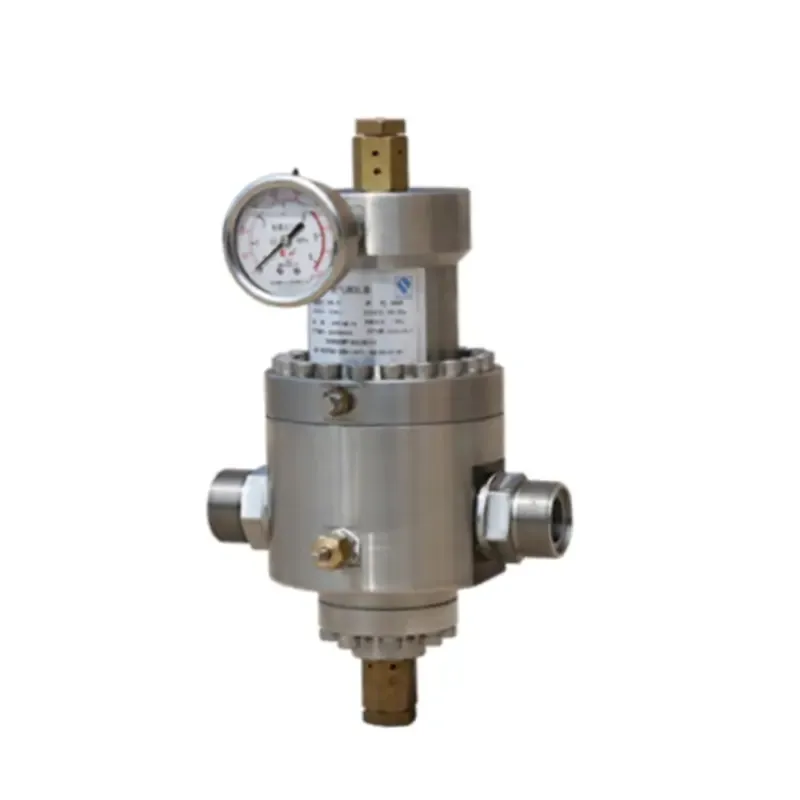
Sep . 25, 2024 16:58
Back to list
gas pressure regulator valve
Understanding Gas Pressure Regulator Valves Essential Components for Safe and Efficient Gas Distribution
Gas pressure regulator valves play a crucial role in the safe and efficient distribution of gas in various applications, from residential heating systems to industrial processes. These devices are designed to maintain a constant output pressure, regardless of fluctuations in input pressure or variations in gas demand. Understanding their function, types, and importance can help users select the right regulator for their specific needs.
A gas pressure regulator valve works by reducing the high pressure of gas from a source, such as a tank or pipeline, to a usable level that is safe for appliances and equipment. When gas enters the regulator, it exerts pressure against a diaphragm, which then moves to open or close the valve, thereby controlling the flow of gas to the downstream system. The output pressure is set to a predetermined level, ensuring that appliances receive a steady supply of gas without the risk of overpressure, which could lead to equipment damage or hazardous situations.
There are several types of gas pressure regulators, each designed for specific applications and pressure ranges. The most common types include
1. Single-stage regulators These are suitable for low-pressure systems where the inlet pressure does not vary significantly. They are simple and cost-effective but may not maintain a constant output pressure if there are larger fluctuations in input pressure.
2. Two-stage regulators These are ideal for applications with high input pressure that can vary widely. The first stage reduces the pressure to an intermediate level, while the second stage further reduces it to the desired output pressure. This design provides better stability and responsiveness to changes in demand.
gas pressure regulator valve

3. Double-acting regulators These regulators can control pressure in both directions, making them suitable for systems where gas might flow in either direction. They are often used in more complex industrial applications.
4. Electronic regulators These modern regulators use electronic sensors and controllers to manage gas flow and pressure precisely. They offer greater accuracy and can be integrated into automated systems for improved efficiency.
The importance of gas pressure regulator valves cannot be overstated. They enhance safety by preventing overpressure situations that can lead to leaks, explosions, or equipment failure. By maintaining a consistent pressure, these regulators also improve the efficiency of gas-consuming equipment, leading to lower energy costs and reduced emissions. Furthermore, they extend the lifespan of appliances by ensuring they operate within their design specifications.
When selecting a gas pressure regulator valve, users should consider several factors, including the type of gas being used, the required output pressure, the inlet pressure range, and the specific application. It's also essential to adhere to local codes and regulations regarding gas installations to ensure safety and compliance.
In conclusion, gas pressure regulator valves are vital components in gas distribution systems that ensure safe and efficient operation. Their ability to maintain a constant pressure protects equipment, reduces costs, and enhances overall safety. Whether in residential, commercial, or industrial settings, understanding the types and functions of these regulators can lead to better decision-making and improved gas management practices. As technology advances, the future may hold even more innovative designs that improve reliability and efficiency in gas distribution systems.
Next:
Latest news
-
Safety Valve Spring-Loaded Design Overpressure ProtectionNewsJul.25,2025
-
Precision Voltage Regulator AC5 Accuracy Grade PerformanceNewsJul.25,2025
-
Natural Gas Pressure Regulating Skid Industrial Pipeline ApplicationsNewsJul.25,2025
-
Natural Gas Filter Stainless Steel Mesh Element DesignNewsJul.25,2025
-
Gas Pressure Regulator Valve Direct-Acting Spring-Loaded DesignNewsJul.25,2025
-
Decompression Equipment Multi-Stage Heat Exchange System DesignNewsJul.25,2025

